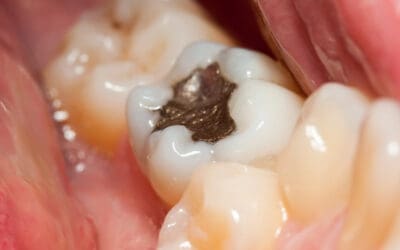Have you ever wondered what fillings dental procedures entail? Understanding these procedures can help demystify the process and alleviate any anxiety you might have. Fillings dental procedures are common treatments used to restore teeth damaged by decay, ensuring your oral health is maintained.
Types of Dental Fillings
Fillings dental procedures are essential for restoring the function and integrity of teeth affected by decay or damage. There are several types of dental fillings available, each with unique properties and benefits. The most common types include amalgam, composite resin, gold, and ceramic fillings. Amalgam fillings, known for their durability, are made from a mixture of metals and have been used for decades. Composite resin fillings, on the other hand, are popular for their ability to match the natural color of teeth, providing a more aesthetically pleasing result.
Gold fillings are valued for their strength and longevity, often lasting many years without significant wear. Ceramic fillings, typically made from porcelain, offer a natural appearance and are resistant to staining. Each type of filling has its own set of characteristics that make it suitable for different situations in fillings dental procedures. For more information on how fillings compare to other dental restorations, you can explore the Dental Crowns vs Fillings: Key Differences to Know.
Common Reasons for Fillings
Fillings dental procedures are a common solution for addressing various dental issues that patients may encounter. One of the primary reasons for getting a filling is to treat cavities caused by tooth decay. When bacteria in the mouth produce acids that erode the enamel, it can lead to small holes or cavities in the teeth. If left untreated, these cavities can grow larger and cause more significant dental problems. Fillings help restore the tooth’s structure and prevent further decay, ensuring that the tooth remains functional and healthy.
Another common reason for fillings is to repair cracked or broken teeth. Teeth can become damaged due to trauma, such as an accident or biting down on something hard. In such cases, fillings dental procedures can be used to restore the tooth’s integrity and appearance. Additionally, fillings can be used to address wear and tear on teeth, which may occur over time due to grinding or clenching. For those in need of this procedure, you can learn more about it by visiting our page on Get Dental Fillings Arlington.
The Filling Procedure Steps
Understanding the filling procedure steps is essential for anyone interested in fillings dental procedures. The process typically begins with the dentist numbing the area around the affected tooth to ensure comfort. Once numb, the dentist removes the decayed portion of the tooth using specialized tools. After the decay is cleared, the area is thoroughly cleaned to prevent any future issues. The dentist then fills the cavity with a suitable material, shaping it to match the natural contours of the tooth. Finally, the filling is polished to ensure a smooth finish and proper bite alignment. This straightforward approach helps restore the tooth’s function and appearance, making fillings dental procedures a common solution for tooth decay.
Materials Used in Fillings
When it comes to fillings dental procedures, understanding the materials used can help patients feel more informed about their treatment options. Common materials include amalgam, which is a durable blend of metals, and composite resins that offer a more natural appearance by matching the color of your teeth. Gold and porcelain are also used for their strength and aesthetic appeal, though they may require more time and cost. Each material has its own set of benefits and considerations, making it important for patients to discuss their options with their dentist. For those seeking further information on fillings dental procedures, Lighthouse Dental, an Arlington Dentist, can provide additional insights.
Longevity of Dental Fillings
When considering fillings dental procedures, understanding the longevity of dental fillings is crucial for maintaining oral health. The lifespan of a dental filling can vary significantly based on several factors, including the type of material used, the location of the filling, and the patient’s oral hygiene habits. Generally, composite fillings may last around 5 to 7 years, while amalgam fillings can endure for 10 to 15 years or more. However, it’s important to note that these are average estimates, and individual results can differ. Regular dental check-ups play a vital role in monitoring the condition of fillings and ensuring they continue to function effectively over time.
Signs You Might Need Fillings
Understanding when you might need fillings is crucial for maintaining optimal oral health. Common signs that indicate the necessity for fillings dental procedures include persistent toothache, sensitivity to hot or cold foods and beverages, visible holes or dark spots on your teeth, and discomfort when biting or chewing. These symptoms can suggest the presence of cavities or tooth decay, which are often addressed through fillings. If you notice any of these signs, it may be time to consider a professional evaluation to determine if fillings are required to restore your dental health.
Post-Filling Care and Expectations
After undergoing fillings dental procedures, patients can generally expect a straightforward recovery process. It’s common to experience some sensitivity to hot or cold temperatures, which typically subsides within a few days. The area around the filling might feel slightly different as you adjust to the new surface in your mouth. It’s important to be aware of any prolonged discomfort or unusual sensations, as these could indicate the need for further evaluation. Understanding what to expect after fillings dental procedures can help patients feel more at ease and prepared for their recovery journey.
Potential Filling Complications
When undergoing fillings dental procedures, it’s important to be aware of potential complications that may arise. While most fillings are completed without issues, some patients might experience sensitivity to hot or cold temperatures, which can occur if the filling is too high or if the tooth’s nerve is irritated. In some cases, fillings may crack or wear down over time, leading to further dental work. Additionally, there is a possibility of an allergic reaction to the materials used in the filling, although this is rare. Understanding these potential complications can help patients have informed discussions with their dental professionals about their fillings dental procedures.
Comparing Fillings and Other Treatments
When exploring fillings dental procedures, it’s essential to understand how they compare to other dental treatments. Fillings are primarily used to restore teeth affected by decay, providing a straightforward solution to prevent further damage. In contrast, other treatments like crowns or root canals address more severe dental issues, such as significant tooth damage or infection. While fillings focus on repairing small cavities, crowns cover the entire tooth to restore its shape and function, and root canals treat the tooth’s interior when the pulp is infected. Each procedure serves a unique purpose in maintaining oral health, highlighting the importance of selecting the appropriate treatment based on the specific dental condition.
Conclusion
Understanding fillings dental procedures is essential for maintaining oral health. For more information or to schedule an appointment, call 703-337-3994 or visit our Google Maps page to read reviews.






